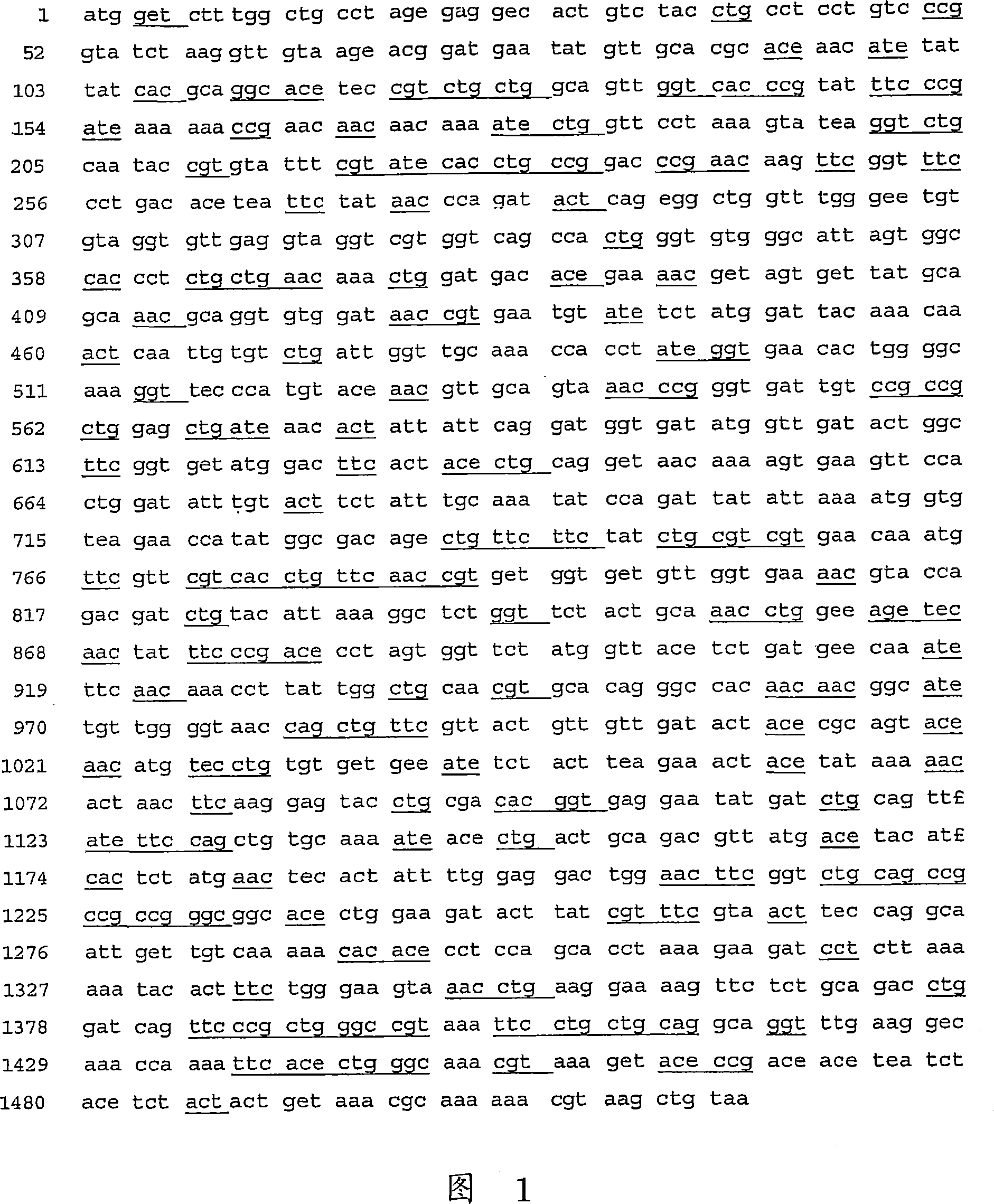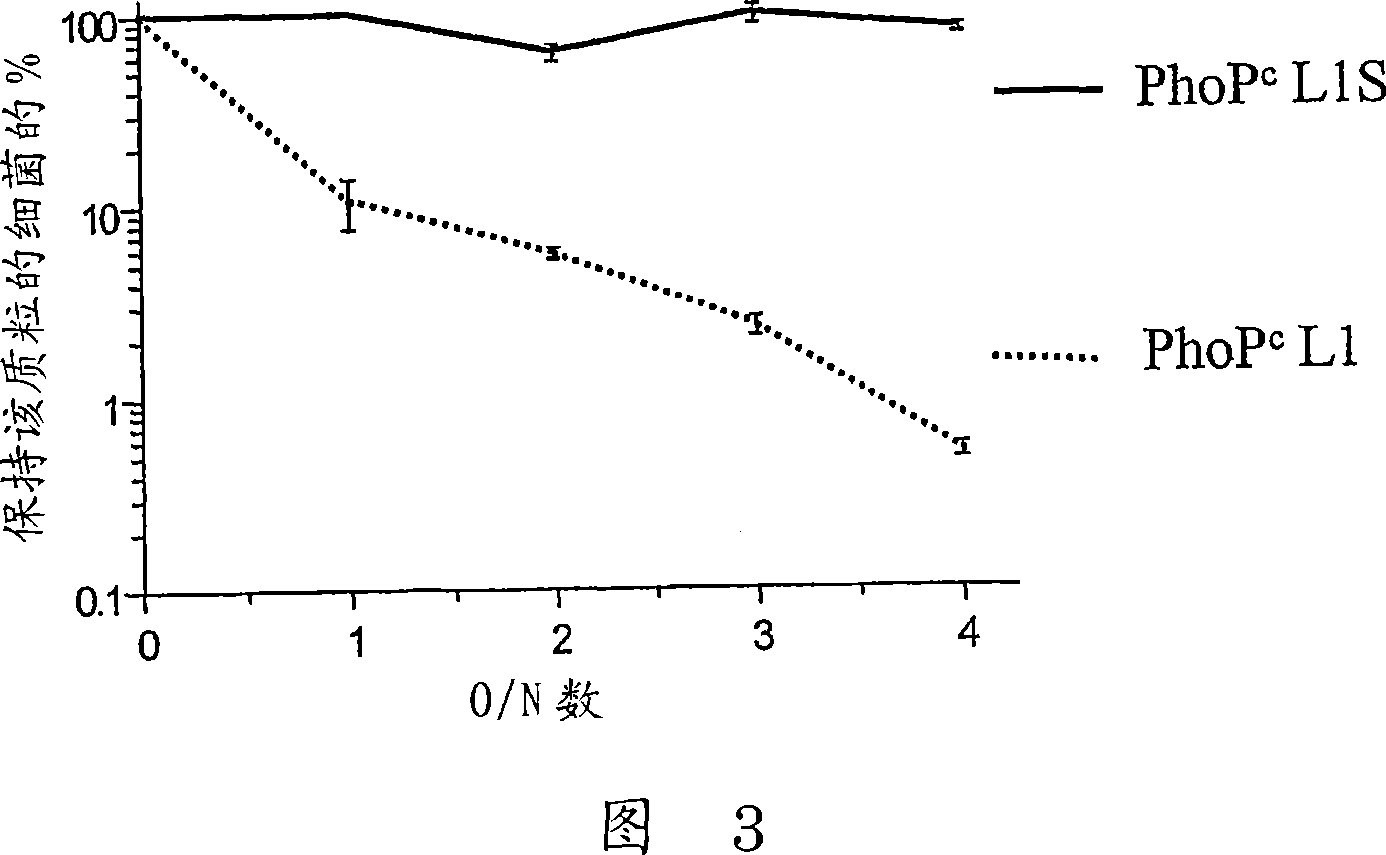Codon-optimized HPV16LI for salmonella vaccine strains against human papillomavirus type 16
An HPV16L1 and codon technology, which is applied in the field of HPV16LI with optimized codons for the SALMONELLA vaccine strain against human papillomavirus type 16, can solve problems such as difficulty in obtaining vaccines
- Summary
- Abstract
- Description
- Claims
- Application Information
AI Technical Summary
Problems solved by technology
Method used
Image
Examples
Embodiment 1
[0048] Plasmid construction and bacterial strains used
[0049] The L1S gene was synthesized by Microsynth, Buchs, Switzerland. The open reading frame was flanked at 5' by Ncol restriction sites and at 3' by Hindlll restriction sites. This L1S Ncol-Hindlll fragment was inserted to replace the original LINcoI-HindlH fragment in plasmid pFS14nsdHPV16-L1 (31). The resulting plasmid, pFS14nsd HPV16-L1S, was introduced into attenuated Salmonella enterica serovar Typhimurium strain PhoP by electroporation (37) c , (CS022(27)) and PhoP″(CS015(26)), both gifts from John Mekalanos, Boston, USA, x 4 989{Acya Acrp, (4)), x4990 (AcyaAcrp-cdt, (4)) and AaroA (SL7207(16)), a gift from Irene Corthesy-Theulaz, Lausanne, CH.
[0050] HPV16 LI and VLP Analysis
[0051] Expression of LI in Salmonella lysates was analyzed by Western blot using anti-HPV16 LI mAb, CAMVIR-1 (Anawa), as previously described 15 (31 ). Data were normalized to the level in bacteria as measured by the OD600 of the c...
Embodiment 2
[0064] Plasmid construction and bacterial strains used
[0065] In the plasmid pFS14nsd HPV16-L1S [Baud, 2004 #1439], the ampicillin resistance coding sequence was replaced with the kanamycin resistance coding sequence as follows. The SacII-XbaI fragment containing the kanamycin coding sequence and promoter was generated by PCR using pET-9a (Novagen) plasmid DNA as a template. The primer used was a 25-mer primer located 54 nucleotides upstream from the first ATG of kanamycin and containing a SacII restriction site (underlined):
[0066] 5'-GGG CCGCGG TGGTCAT GAACAATAA-3', and a 28-mer primer containing an Xbal restriction site (underlined):
[0067] 5'-GGG TCTAGA AGCTGTCAAACATGAGAAT-3'. Another SacII-XbaI large fragment containing the entire pFS14nsdHPV16-L1S plasmid sequence but without the ampicillin resistance gene was generated by inverse PCR with Expand High Fidelity PCR (Roche Molecular Biochemicals), using the following primers: 28-mer primer 5'-GGG containing a ...
PUM
 Login to View More
Login to View More Abstract
Description
Claims
Application Information
 Login to View More
Login to View More - R&D
- Intellectual Property
- Life Sciences
- Materials
- Tech Scout
- Unparalleled Data Quality
- Higher Quality Content
- 60% Fewer Hallucinations
Browse by: Latest US Patents, China's latest patents, Technical Efficacy Thesaurus, Application Domain, Technology Topic, Popular Technical Reports.
© 2025 PatSnap. All rights reserved.Legal|Privacy policy|Modern Slavery Act Transparency Statement|Sitemap|About US| Contact US: help@patsnap.com



